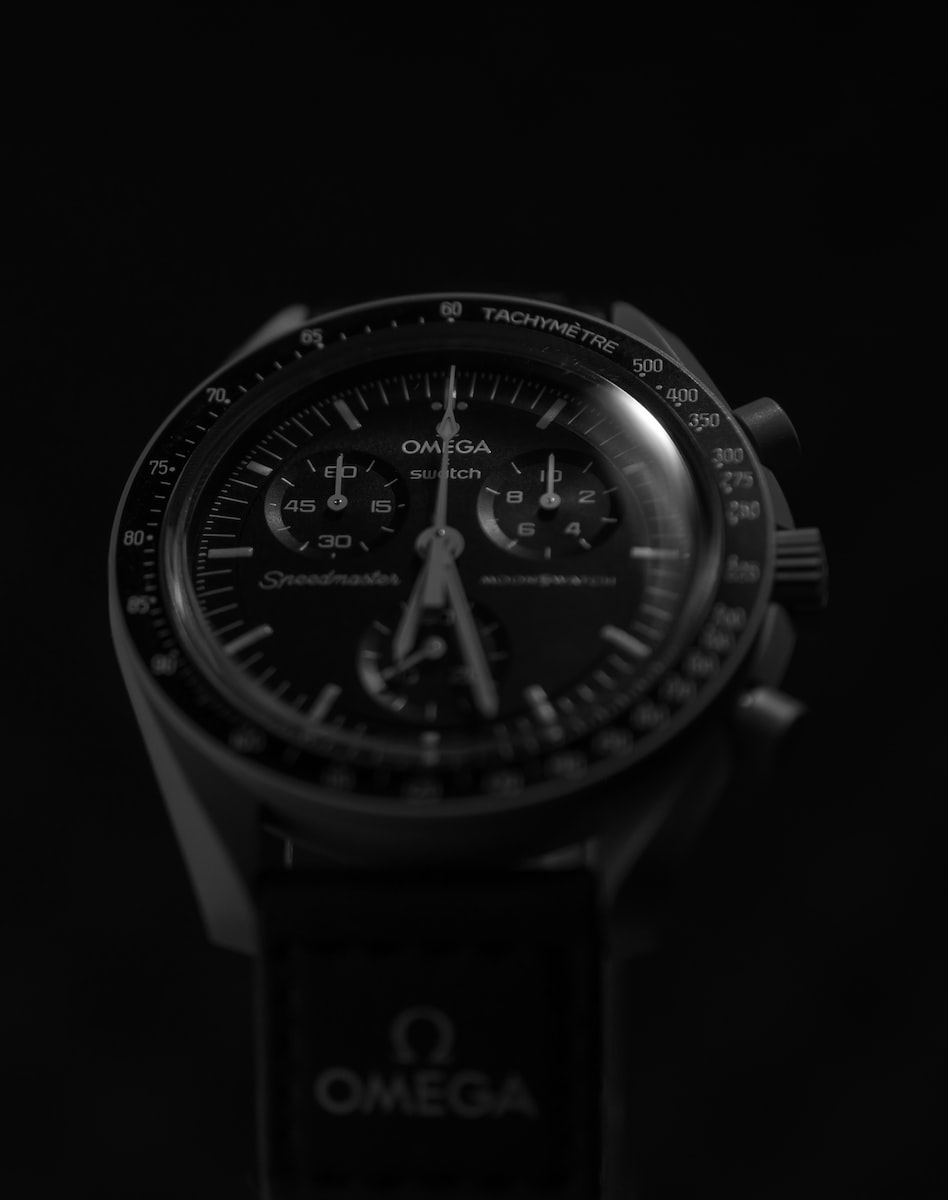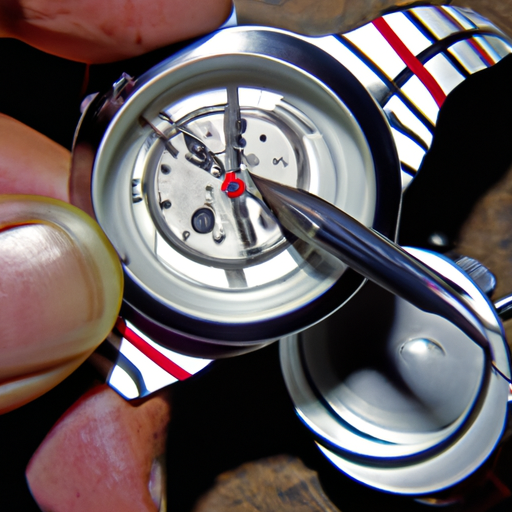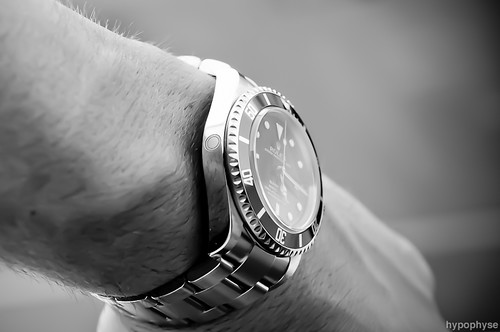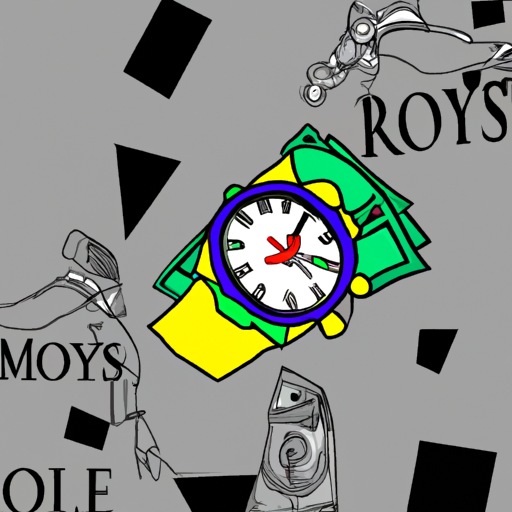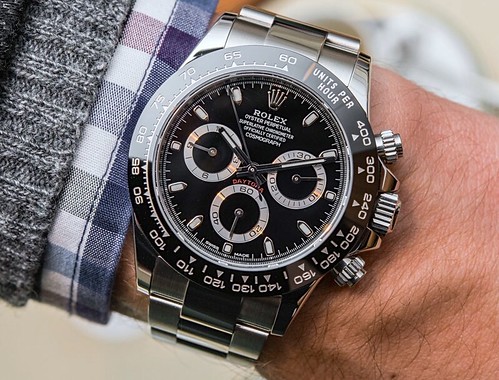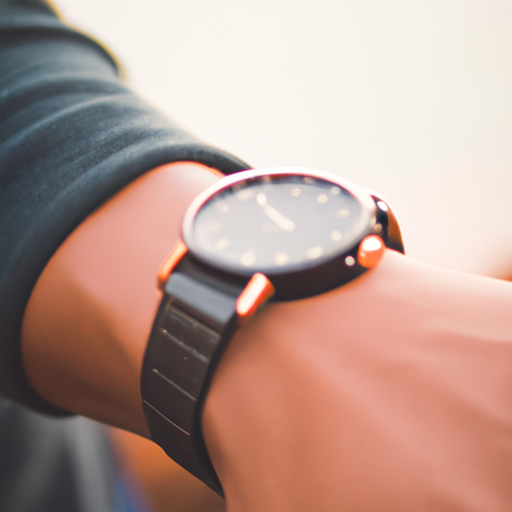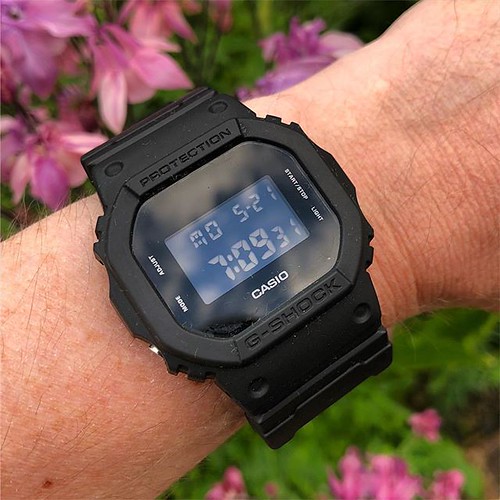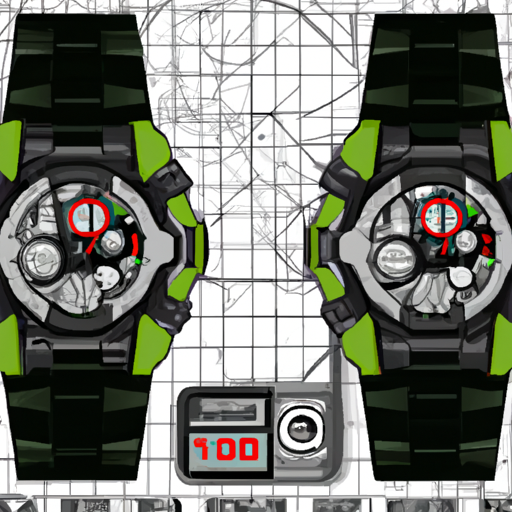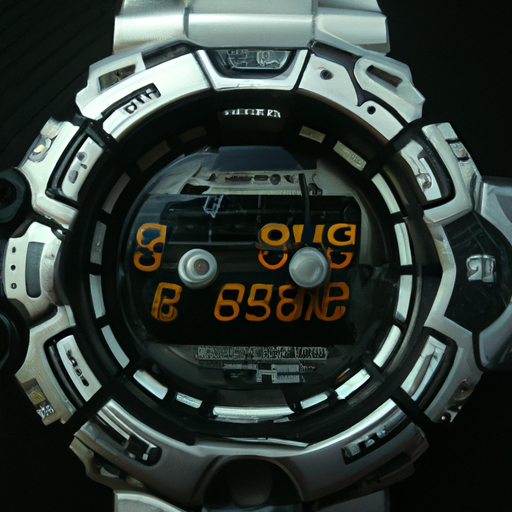The Life and Career of Richard Mille: A Look at the Man Behind the Brand
Richard Mille is a name that has become synonymous with luxury watches. He is the founder and CEO of Richard Mille SA, a Swiss watchmaking company that produces some of the most sought-after timepieces in the world. His career began in 1974 when he joined Mauboussin, a French jewellery and watchmaking company. After working there for several years, he decided to pursue his own venture and founded Richard Mille SA in 1999.
Since then, Richard Mille has become one of the most respected names in watchmaking. His watches are renowned for their innovative designs and use of cutting-edge materials such as carbon fiber and titanium. He also pioneered the use of ceramic components which have since become commonplace among high-end watches. In addition to his technical achievements, Richard Mille has also been praised for his unique aesthetic sensibilities which have resulted in some truly stunning timepieces.
In addition to creating beautiful watches, Richard Mille is also an avid philanthropist who supports numerous charities around the world including UNICEF and Doctors Without Borders. He has also established several scholarships at universities across Europe to help young people pursue their dreams regardless of their financial situation or background.
Richard Mille’s success can be attributed to his unwavering commitment to excellence both technically and aesthetically as well as his dedication to giving back through philanthropy initiatives around the world. His passion for innovation continues today with new models being released each year that push boundaries while still maintaining classic design elements that make them instantly recognizable as a product from this iconic brand
How Richard Mille Revolutionized Watchmaking with His Innovative Designs
Richard Mille is a renowned watchmaker who has revolutionized the industry with his innovative designs. He is known for creating watches that are both aesthetically pleasing and technologically advanced. His watches are highly sought after by collectors and connoisseurs alike, due to their unique design and craftsmanship.
Mille’s approach to watchmaking is one of innovation and experimentation. He uses cutting-edge materials such as carbon fiber, titanium, ceramic, and even sapphire crystal in his designs. This allows him to create watches that are lightweight yet incredibly strong and durable. Additionally, he utilizes complex movements such as tourbillons, chronographs, perpetual calendars, minute repeaters, split-seconds chronographs, dual time zones and more in order to create timepieces that offer unparalleled accuracy and precision.
Mille also places an emphasis on ergonomics when designing his watches; he takes into account the shape of the wrist as well as its size when crafting each piece so that it fits comfortably on the wearer’s arm without compromising its aesthetic appeal or functionality. This attention to detail has resulted in some of the most comfortable luxury watches available today.
In addition to being aesthetically pleasing and technologically advanced, Richard Mille’s creations also boast impressive water resistance ratings; many models can withstand depths up to 300 meters (984 feet). This makes them ideal for those who enjoy swimming or diving while wearing their watch – something which was previously impossible with traditional mechanical timepieces due to their lack of water resistance capabilities.
Overall Richard Mille has revolutionized watchmaking with his innovative designs; from utilizing cutting-edge materials in construction through to incorporating complex movements into each piece – he has created a range of luxury timepieces which offer unparalleled accuracy combined with superior comfort levels for wearers around the world
Exploring the Unique Materials Used in Richard Mille Watches
Richard Mille watches are renowned for their unique materials and innovative designs. The brand has become synonymous with luxury, quality, and precision. From the use of exotic metals to cutting-edge composite materials, Richard Mille watches are crafted from some of the most advanced materials available today.
The case of a Richard Mille watch is typically made from titanium or carbon fiber composites. Titanium is an incredibly strong metal that is lightweight and corrosion-resistant, making it ideal for watch cases. Carbon fiber composites are also extremely durable and lightweight, but they offer additional benefits such as increased shock resistance and improved scratch resistance compared to titanium.
The movement of a Richard Mille watch is often made from grade 5 titanium or NTPT carbon fiber composites. Grade 5 titanium is an alloy that combines strength with lightness while offering superior corrosion resistance compared to other grades of titanium alloys. NTPT carbon fiber composites are composed of multiple layers of parallel filaments that have been impregnated with resin before being woven together in a 3D pattern for maximum strength and rigidity without added weight or bulkiness.
The straps on many Richard Mille watches feature rubberized alligator leather which offers superior comfort while still providing durability against wear and tear over time. The rubberized finish also helps protect the leather from water damage while providing additional grip when worn in wet conditions such as swimming or showering.
Finally, many Richard Mille watches feature sapphire crystal glass which provides excellent scratch resistance while still allowing light to pass through clearly so you can easily read the time on your wristwatch even in low light conditions such as at night or underwater diving trips where visibility may be limited due to murky waters or darkness below the surface level .
Overall, these unique materials used by Richard Milles provide exceptional performance combined with luxurious style that make them stand out among other luxury watch brands on the market today .
The History of Richard Mille’s Iconic Tourbillon Movement
Richard Mille is a Swiss watchmaker renowned for his iconic tourbillon movement. The tourbillon movement was first developed in the late 18th century by Abraham-Louis Breguet, and it has since become one of the most sought-after complications in watchmaking. Richard Mille’s version of the tourbillon movement is unique and highly sought after due to its innovative design and craftsmanship.
The Richard Mille Tourbillon Movement was first introduced in 2001 with the RM 001 model. This model featured a manual winding mechanism, an off-center time display, and a power reserve indicator. The movement also featured an innovative “variable inertia balance wheel” which allowed for greater accuracy when adjusting timekeeping settings. This feature was revolutionary at the time as it allowed for more precise adjustments than ever before seen in watchmaking history.
The RM 001 also featured a unique “free sprung balance wheel” which allowed for greater accuracy when adjusting timekeeping settings as well as improved shock resistance due to its lack of contact with other components within the movement itself. This feature has since become standard on all Richard Mille watches featuring tourbillons movements today.
In addition to these features, Richard Mille also incorporated several other innovations into his tourbillon movements such as ceramic ball bearings which reduce friction between moving parts; titanium bridges that are lighter yet stronger than traditional materials; and sapphire crystal case backs that allow owners to view their watches from both sides without having to remove them from their cases or straps.
Today, Richard Mille continues to innovate with his iconic tourbillon movements by introducing new models each year that feature even more advanced features such as dual escapements (which allow two separate balances wheels) or chronograph functions (which measure elapsed times). These advancements have helped make Richard Milles watches some of the most sought after luxury items on the market today due to their combination of beauty, precision engineering, and cutting edge technology all rolled into one package!
An Inside Look at the Craftsmanship Behind a Richard Mille Timepiece
The craftsmanship behind a Richard Mille timepiece is truly remarkable. From the intricate details of the case to the complex inner workings of the movement, each watch is a work of art. Every component is carefully crafted and assembled with precision to ensure that each timepiece meets Richard Mille’s exacting standards.
The case of a Richard Mille watch is made from high-grade materials such as titanium, carbon fiber, and ceramic. Each material has its own unique properties that make it ideal for use in watches. Titanium is lightweight yet strong, making it perfect for cases that need to be both durable and comfortable on the wrist. Carbon fiber provides an incredibly light yet rigid structure while ceramic offers scratch resistance and durability in extreme conditions. The combination of these materials creates a case that can withstand even the most rigorous activities without sacrificing style or comfort.
Inside each Richard Mille watch lies an intricate movement composed of hundreds of tiny components working together in perfect harmony to keep accurate timekeeping over long periods of wear and tear. The movements are designed with cutting-edge technology such as tourbillons, chronographs, perpetual calendars, minute repeaters, power reserves, dual time zones and more – all powered by manual winding or automatic winding mechanisms depending on model preference. Each component must be meticulously crafted with exacting tolerances before being assembled into one cohesive unit by highly skilled technicians who have been trained in traditional Swiss watchmaking techniques passed down through generations since 1833 when founder Richard Mille first opened his workshop doors in La Chaux-de-Fonds Switzerland .
The end result? A masterpiece worthy of its namesake – one that will stand up to years (and sometimes decades) worth of wear while still keeping accurate timekeeping throughout its lifetime thanks to its impeccable craftsmanship and attention to detail from start to finish .
How to Spot a Fake: Tips for Identifying Authentic Richard Mille Watches
Authentic Richard Mille watches are highly sought after and can be quite expensive. As such, it is important to know how to spot a fake in order to avoid being taken advantage of. Here are some tips for identifying an authentic Richard Mille watch:
1. Check the Serial Number: All genuine Richard Mille watches have a unique serial number engraved on the back of the case. This number should match the one printed on the warranty card that comes with each watch.
2. Examine the Movement: The movement of an authentic Richard Mille watch should be made from high-grade materials and feature intricate details such as hand-engraved bridges and plates, perlage finishing, and polished screws.
3. Look at the Logo: The logo on an authentic Richard Mille watch will be crisp and clear with no signs of fading or smudging around its edges. Additionally, it should not have any spelling errors or inconsistencies in its font size or style when compared to other logos found on genuine watches from this brand.
4. Inspect for Quality Control Stamps: Genuine Richard Mille watches will have quality control stamps located inside their cases which indicate that they have passed rigorous testing procedures before being released for sale to customers worldwide.
5 . Compare Prices : Authentic Richard Milles tend to cost significantly more than replicas due to their superior craftsmanship and materials used in their construction . If you come across a deal that seems too good to be true , chances are it is not legitimate .
The Most Expensive and Coveted Models from the House of Richard Mille
The House of Richard Mille is renowned for its exquisite and luxurious timepieces. The brand has become synonymous with luxury, craftsmanship, and innovation. From the iconic RM 037 to the RM 11-03 McLaren Automatic Flyback Chronograph, Richard Mille watches are some of the most sought-after and expensive models in the world. Here are some of the most coveted models from this prestigious watchmaker:
RM 037: This model is one of Richard Mille’s signature pieces. It features a tonneau-shaped case made from grade 5 titanium with a sapphire crystal back that reveals an intricate movement within. The watch also boasts a tourbillon escapement, which helps to improve accuracy by compensating for errors caused by gravity when worn on different parts of the body. This model retails for around $400,000 USD making it one of the most expensive watches ever produced by Richard Mille.
RM 11-03 McLaren Automatic Flyback Chronograph: This limited edition timepiece was created in collaboration with McLaren Automotive and features an automatic flyback chronograph movement encased in grade 5 titanium with carbon fiber accents on its bezel and crown guard. It also has a power reserve indicator at 9 o’clock as well as a date window at 3 o’clock position on its dial face. With only 500 pieces available worldwide, this watch retails for around $200,000 USD making it one of the most exclusive models from Richard Mille’s collection.
RM 50-03 Tourbillon Split Seconds Chronograph Ultralight McLaren F1: This ultra light timepiece was created using advanced materials such as graphene composite which makes it incredibly lightweight yet strong enough to withstand extreme conditions like those encountered during Formula 1 racing events where it was designed to be used by drivers during races or practice sessions alike. It features an impressive tourbillon split seconds chronograph movement encased in grade 5 titanium along with carbon nanofiber accents throughout its design giving it an unmistakable look that sets it apart from other watches produced by this brand . With only 75 pieces available worldwide , this model retails for around $1 million USD making it one of the most expensive watches ever produced by Richard Mille .
These three models represent just some examples out of many luxurious creations crafted by this prestigious watchmaker over years . Each piece is unique , combining innovative technology , exquisite craftsmanship , and timeless design into something truly special that will last generations .
Q&A
1. Who is Richard Mille?
Richard Mille is a Swiss luxury watchmaker and founder of the eponymous brand, Richard Mille Watches. He has been credited with revolutionizing the watchmaking industry by introducing innovative materials and designs to create watches that are both aesthetically pleasing and technically advanced.
2. Where is Richard Mille from?
Richard Mille was born in France in 1951, but he currently resides in Switzerland where his company is based.
3. What inspired Richard Mille to create his watches?
Richard was inspired by Formula 1 racing when creating his watches, as he wanted to bring the same level of precision engineering found in race cars into wristwatches for everyday use. He also drew inspiration from architecture and art when designing his timepieces, which feature unique shapes and colors that stand out from traditional watch designs.
4. What materials does Richard Milles use for his watches?
Richard Milles uses a variety of materials for his watches including titanium, carbon fiber, ceramic, rubber, sapphire crystal glass and even gold or platinum alloys depending on the model being created. Each material has its own unique properties that make it ideal for certain components of a watch such as its case or movement parts like gears or springs.
5. How much do Richard Milles’ watches cost?
The price range of a Richard Milles’ watch can vary greatly depending on the model chosen; however they typically start at around $20k USD up to over $1 million USD for some limited edition models with rare gemstones set into them or special features like tourbillons (a type of mechanical complication).
6 What makes a Richard Milles’ watch so special?
A major factor that sets apart a Richard Milles’ watch from other luxury brands is its combination of innovative design elements with cutting-edge technology such as their patented RMAC2 movement which offers superior accuracy compared to other mechanical movements available today; this makes them highly sought after by collectors who appreciate both form and function in their timepieces! Additionally each piece is handcrafted using only the finest materials available ensuring quality construction throughout every component used within each individual piece produced by this prestigious brand!
7 How long does it take to make one of these luxurious timepieces? It typically takes between 6-12 months for one skilled craftsman to complete an entire piece due to all the intricate details involved during production; however some limited edition models may take longer due to additional complications added onto them such as tourbillons or gemstone settings!


